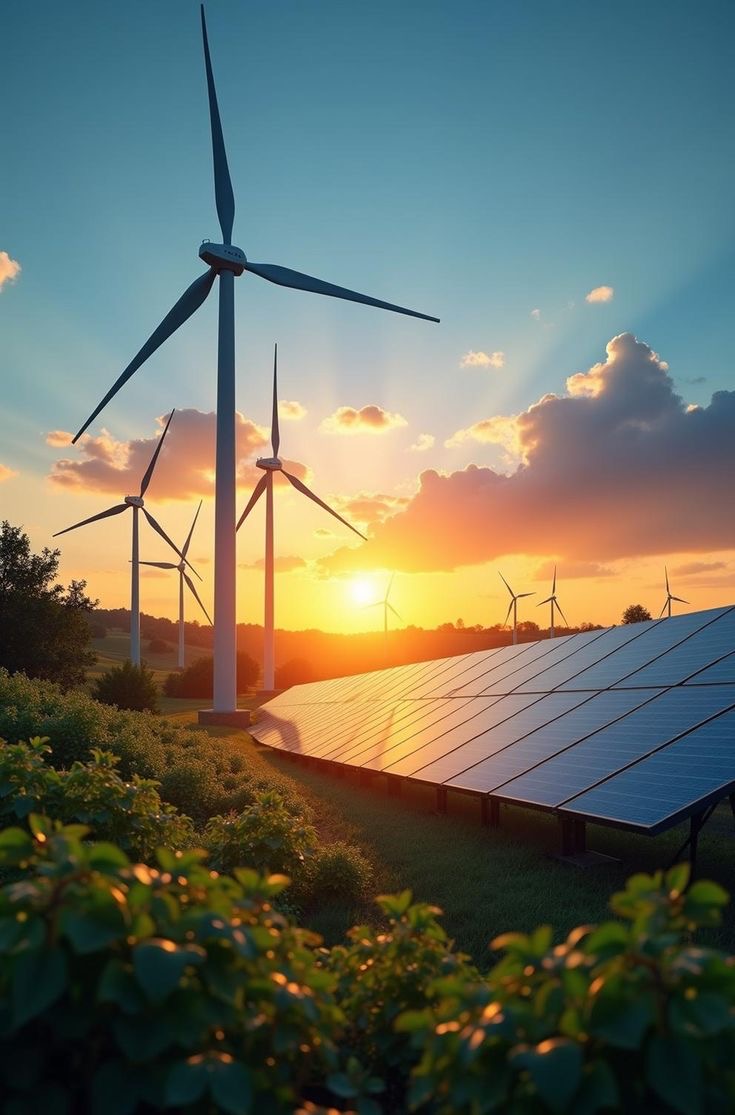HOW KENYA IS LEADING THE WAY IN RENEWABLE ENERGY
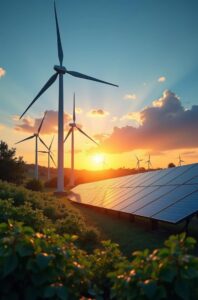
The world is at a critical juncture in its energy journey. As the global population continues to grow, energy demands are increasing, and the need for sustainable and renewable energy sources has never been more pressing. The impacts of climate change, energy poverty, and environmental degradation are being felt across the globe, and it is clear that a fundamental transformation of the world’s energy systems is required.
In this context, Africa has emerged as a leader in the transition to renewable energy. With its abundant natural resources, favorable climate, and growing energy demands, the continent is poised to become a major player in the global renewable energy market. And at the forefront of this transition is Kenya, a country that has made significant strides in recent years in its journey to a sustainable energy future.
Kenya’s renewable energy journey is a testament to the country’s commitment to sustainability and its willingness to innovate and adapt to new challenges. With its abundant renewable energy resources, favorable policy framework, and growing investment in the sector, Kenya is poised to become a leader in renewable energy in Africa. This article will explore Kenya’s renewable energy journey, highlighting the country’s progress, challenges, and opportunities in the sector.
THE EARLY YEARS: LAYING THE FOUNDATION FOR KENYA’S RENEWABLE ENERGY JOURNEY
Kenya’s renewable energy journey began in the early 2000s, a time when the country was facing significant energy challenges. The country’s energy sector was dominated by fossil fuels, with over 70% of its electricity generated from thermal sources. This reliance on fossil fuels not only contributed to greenhouse gas emissions but also made the country vulnerable to fluctuations in global oil prices.
In response to these challenges, the Kenyan government began to explore alternative energy sources, including renewable energy. In 2004, the government launched the Energy Policy, which aimed to increase the share of renewable energy in the country’s energy mix. The policy framework provided a solid foundation for the development of renewable energy in Kenya, outlining the country’s vision, mission, and objectives for the sector.
One of the key objectives of the Energy Policy was to increase the share of renewable energy in the country’s energy mix to 30% by 2017. To achieve this objective, the government established a number of institutions, including the Energy Regulatory Commission (ERC) and the Kenya Renewable Energy Association (KREA). These institutions played a crucial role in promoting the development of renewable energy in Kenya, providing a framework for the regulation of the sector and supporting the growth of renewable energy technologies.
The government also introduced a number of incentives to encourage the development of renewable energy, including tax breaks, feed-in tariffs, and grants. These incentives helped to attract investment to the sector, with a number of local and international companies establishing renewable energy projects in Kenya.
Despite these efforts, the early years of Kenya’s renewable energy journey were not without challenges. One of the major challenges was the lack of infrastructure to support the transmission and distribution of renewable energy. The country’s grid was not designed to handle the variable output of renewable energy sources, and the lack of transmission infrastructure made it difficult to transport renewable energy from remote locations to urban centers.
Another challenge was the high upfront costs of renewable energy technologies. While the cost of renewable energy technologies has decreased significantly in recent years, in the early 2000s, the cost of solar panels, wind turbines, and other renewable energy technologies was prohibitively expensive for many Kenyans.
Despite these challenges, Kenya made significant progress in the development of renewable energy in the early 2000s. The country’s renewable energy sector grew from a negligible base to become a significant contributor to the country’s energy mix. The sector also attracted significant investment, with a number of local and international companies establishing renewable energy projects in Kenya.
In conclusion, the early years of Kenya’s renewable energy journey were marked by significant progress and challenges. The government’s efforts to promote the development of renewable energy, including the establishment of institutions and the introduction of incentives, helped to attract investment to the sector and grow the country’s renewable energy capacity. Despite the challenges, Kenya laid a solid foundation for its renewable energy journey, paving the way for the significant progress that has been made in recent years.
SOLAR ENERGY: HARNESSING THE POWER OF THE SUN
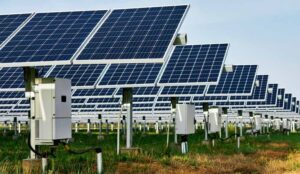
Solar energy is a vital component of Kenya’s renewable energy mix, offering a clean, sustainable, and abundant source of power. As the country continues to transition away from fossil fuels, solar energy is poised to play an increasingly important role in meeting Kenya’s growing energy demands.
Benefits of Solar Energy
1. Renewable and Sustainable: Solar energy is a renewable source of power, reducing Kenya’s reliance on finite fossil fuels and mitigating climate change.
2. Zero Emissions: Solar energy generates electricity without emitting greenhouse gases or other pollutants, improving air quality and public health.
3. Energy Independence: Solar energy can provide energy independence for off-grid communities, enhancing energy access and quality of life.
4. Job Creation and Local Economic Benefits: Solar energy can create jobs and stimulate local economies, contributing to Kenya’s economic growth and development.
5. Low Operating Costs: Solar energy has low operating costs, reducing the financial burden on consumers and enhancing energy affordability.
Challenges Facing Solar Energy Development
1. High Upfront Costs: Solar energy technologies require significant upfront investment, making them less competitive with fossil fuels.
2. Intermittency: Solar energy is an intermittent source of power, requiring energy storage solutions to ensure a stable and reliable energy supply.
3. Land Acquisition: Large-scale solar energy projects require significant land areas, potentially conflicting with conservation and agricultural uses.
4. Technology Limitations: Solar energy technologies can be affected by various factors, including climate, geography, and maintenance requirements.
5. Policy and Regulatory Frameworks: Kenya’s solar energy sector requires clear and consistent policies and regulatory frameworks to attract investment and promote growth.
Opportunities for Solar Energy Development
1. Rural Electrification: Solar energy can provide energy access to off-grid communities, enhancing energy access and quality of life.
2. Commercial and Industrial Applications: Solar energy can power commercial and industrial operations, reducing energy costs and enhancing competitiveness.
3. Water Pumping and Irrigation: Solar energy can power water pumping and irrigation systems, enhancing agricultural productivity and food security.
4. Mini-Grids and Micro-Grids: Solar energy can power mini-grids and micro-grids, providing energy access to remote and off-grid communities.
5. Research and Development: Kenya can promote research and development in solar energy, driving innovation and reducing the costs of solar energy technologies.
Future Prospects for Solar Energy in Kenya
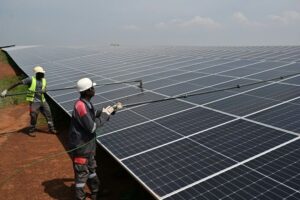
As Kenya continues to transition away from fossil fuels, solar energy is poised to play an increasingly important role in meeting the country’s growing energy demands. With the government setting ambitious targets for renewable energy adoption, solar energy is expected to contribute significantly to Kenya’s energy mix.
To realize the full potential of solar energy, Kenya must address the challenges facing the sector, including high upfront costs, intermittency, and policy and regulatory frameworks. By promoting research and development, enhancing energy storage solutions, and developing clear and consistent policies and regulatory frameworks, Kenya can unlock the full potential of solar energy and promote sustainable development.
WIND ENERGY: HARNESSING THE POWER OF THE WIND
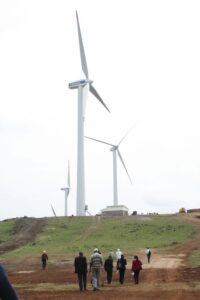
Wind energy is a vital component of Kenya’s renewable energy mix, offering a clean, sustainable, and abundant source of power. As the country continues to transition away from fossil fuels, wind energy is poised to play an increasingly important role in meeting Kenya’s growing energy demands.
Benefits of Wind Energy
1. Renewable and Sustainable: Wind energy is a renewable source of power, reducing Kenya’s reliance on finite fossil fuels and mitigating climate change.
2. Zero Emissions: Wind energy generates electricity without emitting greenhouse gases or other pollutants, improving air quality and public health.
3. Energy Independence: Wind energy can provide energy independence for off-grid communities, enhancing energy access and quality of life.
4. Job Creation and Local Economic Benefits: Wind energy can create jobs and stimulate local economies, contributing to Kenya’s economic growth and development.
5. Low Operating Costs: Wind energy has low operating costs, reducing the financial burden on consumers and enhancing energy affordability.
Challenges Facing Wind Energy Development
1. Intermittency: Wind energy is an intermittent source of power, requiring energy storage solutions to ensure a stable and reliable energy supply.
2. High Upfront Costs: Wind energy technologies require significant upfront investment, making them less competitive with fossil fuels.
3. Land Acquisition: Large-scale wind energy projects require significant land areas, potentially conflicting with conservation and agricultural uses.
4. Technology Limitations: Wind energy technologies can be affected by various factors, including wind speeds, turbulence, and maintenance requirements.
5. Policy and Regulatory Frameworks: Kenya’s wind energy sector requires clear and consistent policies and regulatory frameworks to attract investment and promote growth.
Opportunities for Wind Energy Development
1. Rural Electrification: Wind energy can provide energy access to off-grid communities, enhancing energy access and quality of life.
2. Commercial and Industrial Applications: Wind energy can power commercial and industrial operations, reducing energy costs and enhancing competitiveness.
3. Water Pumping and Irrigation: Wind energy can power water pumping and irrigation systems, enhancing agricultural productivity and food security.
4. Mini-Grids and Micro-Grids: Wind energy can power mini-grids and micro-grids, providing energy access to remote and off-grid communities.
5. Research and Development: Kenya can promote research and development in wind energy, driving innovation and reducing the costs of wind energy technologies.
Future Prospects for Wind Energy in Kenya
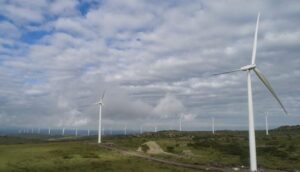
As Kenya continues to transition away from fossil fuels, wind energy is poised to play an increasingly important role in meeting the country’s growing energy demands. With the government setting ambitious targets for renewable energy adoption, wind energy is expected to contribute significantly to Kenya’s energy mix.
To realize the full potential of wind energy, Kenya must address the challenges facing the sector, including intermittency, high upfront costs, and policy and regulatory frameworks. By promoting research and development, enhancing energy storage solutions, and developing clear and consistent policies and regulatory frameworks, Kenya can unlock the full potential of wind energy and promote sustainable development.
Key Wind Energy Projects in Kenya
1. Lake Turkana Wind Power Project: One of Africa’s largest wind farms, generating 300 MW of clean energy.
2. Ngong Hills Wind Farm: A 25.5 MW wind farm located near Nairobi, providing power to thousands of homes.
3. Kipeto Wind Energy Project: A 100 MW wind farm located in Kajiado County, expected to be completed in the near future.
Wind energy is a vital component of Kenya’s renewable energy mix, offering a clean, sustainable, and abundant source of power. As Kenya continues to transition away from fossil fuels, wind energy is poised to play an increasingly important role in meeting the country’s growing energy demands. By addressing the challenges facing the sector and promoting research and development, Kenya can unlock the full potential of wind energy and promote sustainable development.
GEOTHERMAL ENERGY: HARNESSING THE HEAT OF THE EARTH

Geothermal energy is a vital component of Kenya’s renewable energy mix, offering a reliable, clean, and sustainable source of power. Located in the Eastern African Rift System, Kenya is home to some of the most extensive and active geothermal resources in the world.
Benefits of Geothermal Energy
1. Reliability: Geothermal energy provides baseload power, ensuring a stable and reliable supply of electricity to the grid.
2. Low Operating Costs: Once established, geothermal power plants have relatively low operating costs, reducing the financial burden on consumers.
3. Job Creation and Local Economic Benefits: Geothermal energy can create jobs and stimulate local economies, contributing to Kenya’s economic growth and development.
4. Reduced Greenhouse Gas Emissions: Geothermal energy is a zero-carbon source of power, reducing Kenya’s greenhouse gas emissions and contributing to a cleaner environment.
5. Energy Security: Geothermal energy can enhance energy security, reducing Kenya’s dependence on imported fossil fuels and promoting energy self-sufficiency.
Challenges Facing Geothermal Energy Development
1. Exploration Risks: Geothermal exploration is a complex and risky process, with no guarantee of discovering viable resources.
2. High Upfront Costs: Geothermal development requires significant upfront investment in exploration, drilling, and infrastructure.
3. Technical Challenges: Geothermal energy development can be technically challenging, requiring specialized equipment and expertise.
4. Environmental Concerns: Geothermal energy development can raise environmental concerns, including land subsidence, induced seismicity, and water pollution.
5. Policy and Regulatory Frameworks: Kenya’s geothermal energy sector requires clear and consistent policies and regulatory frameworks to attract investment and promote growth.
Opportunities for Geothermal Energy Development
1. Rural Electrification: Geothermal energy can provide energy access to off-grid communities, enhancing energy access and quality of life.
2. Industrial Applications: Geothermal energy can power industrial operations, including manufacturing, mining, and agriculture.
3. District Heating and Cooling: Geothermal energy can provide district heating and cooling, reducing energy costs and enhancing energy efficiency.
4. Greenhouse Heating: Geothermal energy can provide heat for greenhouses, enhancing agricultural productivity and food security.
5. Research and Development: Kenya can promote research and development in geothermal energy, driving innovation and reducing the costs of geothermal energy technologies.
Future Prospects for Geothermal Energy in Kenya

photo by: VectorMine
As Kenya continues to transition away from fossil fuels, geothermal energy is poised to play an increasingly important role in meeting the country’s growing energy demands. With the government setting ambitious targets for renewable energy adoption, geothermal energy is expected to contribute significantly to Kenya’s energy mix.
To realize the full potential of geothermal energy, Kenya must address the challenges facing the sector, including exploration risks, high upfront costs, and policy and regulatory frameworks. By promoting research and development, enhancing exploration and drilling technologies, and developing clear and consistent policies and regulatory frameworks, Kenya can unlock the full potential of geothermal energy and promote sustainable development.
Key Geothermal Energy Projects in Kenya
1. Ol Karia Geothermal Complex: One of the largest geothermal complexes in the world, generating over 1,700 MW of clean energy.
2. Menengai Geothermal Project: A 400 MW geothermal project located in Nakuru County, expected to be completed in the near future.
3. Lake Bogoria Geothermal Project: A 200 MW geothermal project located in Baringo County, expected to be completed in the near future.
Geothermal energy is a vital component of Kenya’s renewable energy mix, offering a reliable, clean, and sustainable source of power. As Kenya continues to transition away from fossil fuels, geothermal energy is poised to play an increasingly important role in meeting the country’s growing energy demands. By addressing the challenges facing the sector and promoting research and development, Kenya can unlock the full potential of geothermal energy and promote sustainable development.
CHALLENGES FACED BY KENYA’S RENEWABLE ENERGY SECTOR
Kenya has made significant strides in promoting renewable energy, but the sector still faces numerous challenges that hinder its growth and development. These challenges can be broadly categorized into technical, financial, environmental, social, and policy-related issues.
Technical Challenges:
1. Intermittency: Renewable energy sources like solar and wind are intermittent, making it challenging to ensure a stable and reliable energy supply.
2. Grid Integration: Integrating renewable energy into the grid can be complex, requiring advanced infrastructure and technologies.
3. Energy Storage: The lack of cost-effective energy storage solutions hinders the widespread adoption of renewable energy.
4. Transmission and Distribution Infrastructure: Kenya’s transmission and distribution infrastructure requires upgrading to support the integration of renewable energy sources.
5. Technology Limitations: The efficiency and reliability of renewable energy technologies, such as solar panels and wind turbines, can be affected by various factors, including climate and geography.
Financial Challenges:
1. High Upfront Costs: Renewable energy technologies require significant upfront investment, making them less competitive with fossil fuels.
2. Limited Access to Financing: Small-scale renewable energy projects often struggle to access financing, hindering their development.
3. Tariff and Pricing Issues: Uncertainty around tariffs and pricing can deter investment in renewable energy.
4. Risk Perception: Investors may perceive renewable energy projects as high-risk, making it challenging to secure financing.
5. Currency Fluctuations: Fluctuations in currency exchange rates can affect the viability of renewable energy projects.
Environmental Challenges:
1. Land Acquisition: Large-scale renewable energy projects require significant land areas, potentially conflicting with conservation and agricultural uses.
2. Water Usage: Some renewable energy technologies, like solar thermal power, require significant water resources, straining local supplies.
3. Waste Management: The disposal of renewable energy technologies, such as solar panels, can pose environmental challenges.
4. Wildlife Conservation: Renewable energy projects can impact wildlife habitats and migration patterns, requiring careful planning and mitigation measures.
5. Climate Change: Renewable energy projects can be vulnerable to climate change impacts, such as changing weather patterns and increased extreme weather events.
Social Challenges:
1. Community Engagement: Renewable energy projects can have significant social impacts, requiring effective community engagement and consultation.
2. Job Creation and Local Economic Benefits: While renewable energy can create jobs, it is essential to ensure that local communities benefit from these opportunities.
3. Energy Access: Renewable energy can help address energy poverty, but ensuring equitable access to energy services remains a challenge.
4. Land Rights: Renewable energy projects can raise concerns about land rights and ownership, particularly in areas with complex or disputed land tenure.
5. Cultural Heritage: Renewable energy projects can impact cultural heritage sites and artifacts, requiring careful planning and mitigation measures.
Policy and Regulatory Challenges:
1. Lack of Clear Policies and Regulations: Kenya’s renewable energy sector requires clear and consistent policies and regulations to attract investment.
2. Permitting and Licensing Delays: Delays in permitting and licensing can slow down renewable energy development and increase costs.
3. Inadequate Incentives: Renewable energy developers may not receive adequate incentives to invest in the sector, hindering its growth.
4. Taxation and Fiscal Policies: Uncertainty around taxation and fiscal policies can deter investment in renewable energy.
5. Regional Cooperation: Kenya’s renewable energy sector can benefit from regional cooperation and knowledge sharing, but this requires effective coordination and collaboration.
OPPORTUNITIES IN KENYA’S RENEWABLE ENERGY SECTOR
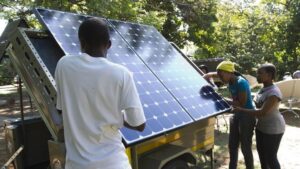
Kenya has made significant strides in promoting renewable energy, and the sector presents numerous opportunities for growth, development, and investment. These opportunities can be broadly categorized into technical, financial, environmental, social, and policy-related areas.
Technical Opportunities:
1. Diversification of Renewable Energy Sources: Kenya can explore a range of renewable energy sources, including solar, wind, geothermal, hydro, and biomass, to reduce dependence on fossil fuels.
2. Improved Energy Efficiency: Renewable energy technologies can be designed to optimize energy efficiency, reducing energy losses and costs.
3. Grid Modernization: Kenya’s grid can be modernized to accommodate the integration of renewable energy sources, ensuring a stable and reliable energy supply.
4. Energy Storage Solutions: Advances in energy storage technologies can enable the widespread adoption of renewable energy, mitigating intermittency challenges.
5. Smart Grids and Metering: Smart grid technologies and advanced metering infrastructure can optimize energy distribution, reduce energy losses, and enhance energy access.
Financial Opportunities:
1. Investment and Financing: Kenya’s renewable energy sector presents opportunities for investment and financing, attracting local and international investors.
2. Reduced Energy Costs: Renewable energy can reduce energy costs for consumers, enhancing energy affordability and competitiveness.
3. Job Creation and Local Economic Benefits: Renewable energy can create jobs and stimulate local economies, contributing to Kenya’s economic growth and development.
4. Carbon Credit Opportunities: Kenya can benefit from carbon credit opportunities, generating revenue from the sale of carbon credits.
5. Green Bond Financing: Kenya can explore green bond financing options, raising capital for renewable energy projects while promoting sustainable development.
Environmental Opportunities:
1. Reduced Greenhouse Gas Emissions: Renewable energy can reduce Kenya’s greenhouse gas emissions, contributing to global efforts to mitigate climate change.
2. Improved Air Quality: Renewable energy can improve air quality, reducing the negative impacts of air pollution on human health and the environment.
3. Water Conservation: Renewable energy can conserve water resources, reducing the water footprint of energy generation.
4. Waste Reduction and Management: Renewable energy can reduce waste generation and promote sustainable waste management practices.
5. Conservation of Natural Resources: Renewable energy can promote the conservation of natural resources, reducing the environmental impacts of energy generation.
Social Opportunities:
1. Energy Access and Equity: Renewable energy can enhance energy access and equity, promoting energy justice and reducing energy poverty.
2. Job Creation and Skills Development: Renewable energy can create jobs and promote skills development, enhancing Kenya’s human capital and competitiveness.
3. Community Development and Engagement: Renewable energy can promote community development and engagement, ensuring that local communities benefit from renewable energy projects.
4. Improved Health and Wellbeing: Renewable energy can improve health and wellbeing, reducing the negative impacts of air pollution and promoting sustainable development.
5. Enhanced Energy Security: Renewable energy can enhance energy security, reducing Kenya’s dependence on imported fossil fuels and promoting energy self-sufficiency.
Policy and Regulatory Opportunities:
1. Policy and Regulatory Frameworks: Kenya can develop and implement policies and regulatory frameworks that support the growth and development of the renewable energy sector.
2. Incentives and Taxation: Kenya can offer incentives and taxation benefits to promote investment in renewable energy, reducing the costs of renewable energy technologies.
3. Regional Cooperation and Knowledge Sharing: Kenya can engage in regional cooperation and knowledge sharing, promoting the development of renewable energy in East Africa.
4. Capacity Building and Training: Kenya can invest in capacity building and training programs, enhancing the skills and knowledge of professionals in the renewable energy sector.
5. Research and Development: Kenya can promote research and development in renewable energy, driving innovation and reducing the costs of renewable energy technologies.
CONCLUSION
In conclusion, Kenya’s renewable energy sector has made significant strides in recent years, driven by the government’s commitment to transition away from fossil fuels and promote sustainable development. The country’s abundant renewable energy resources, including solar, wind, geothermal, and hydro power, offer a unique opportunity to enhance energy security, reduce greenhouse gas emissions, and promote economic growth.
While challenges persist, including high upfront costs, intermittency, and policy and regulatory frameworks, Kenya has the potential to become a leader in renewable energy development in Africa. By promoting research and development, enhancing energy storage solutions, and developing clear and consistent policies and regulatory frameworks, Kenya can unlock the full potential of renewable energy and achieve its ambitious targets for renewable energy adoption.
Ultimately, Kenya’s transition to a renewable energy-based economy will require a collaborative effort from government, private sector, civil society, and local communities. By working together, Kenya can harness the power of renewable energy to drive sustainable development, promote energy access and equity, and create a brighter future for generations to come.
Key takeaways from the discussion include:
– Kenya has abundant renewable energy resources, including solar, wind, geothermal, and hydro power.
– Renewable energy can enhance energy security, reduce greenhouse gas emissions, and promote economic growth.
– Challenges persist, including high upfront costs, intermittency, and policy and regulatory frameworks.
– Kenya has the potential to become a leader in renewable energy development in Africa.
– A collaborative effort is required to unlock the full potential of renewable energy and achieve Kenya’s ambitious targets for renewable energy adoption.

